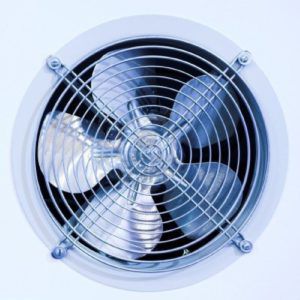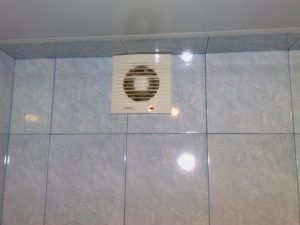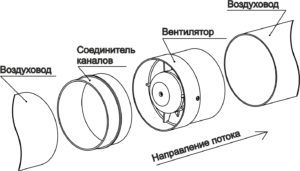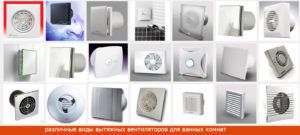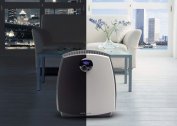An ordinary bathroom fan, in most cases, creates an unpleasant noise during operation. Such noise is sometimes a significant irritant to humans, which raises a serious question about the suitability of the device for use.
Problems that may arise as a result of human exposure to noise include:
- severe, often chronic, fatigue;
- persistent migraine (headache);
- negative emotional background.
There are two ways to avoid such problems:
- completely get rid of the fan, which, of course, will cause a number of other, no less serious, problems;
- replace the old with a new silent device.
Due to all the problems that an ordinary fan brings, many manufacturers create more advanced bathroom devices that do not produce annoying noises.
More details about the features of each individual device can be found on specialized forums on the Internet, where knowledgeable people will also tell you which device is better to choose. In addition, you can read comments on products in various online stores. Also, do not forget about the official websites of silent fan manufacturers, where it is possible to find absolutely all the information and choose the right device.
Differences between a regular fan and a silent fan
The sound frequency generated by a conventional fan is 35 dB. Such a sound is perceived on a par with a whisper, but it attracts a person’s attention greatly, causing discomfort. This is especially noticeable with prolonged exposure to hearing.
The silent fan for the bathroom, unlike an ordinary one, creates much less noise. Typically, the frequency of the generated noise does not exceed 25 dB. At this level, the impact can not be heard, which is why staying in the bathroom does not cause poor health.
Any noise from a silent fan, including the sound of a spinning propeller, is ignored by hearing. To hear the noise from the device, you need to approach it at a distance of less than 1 meter.
How a silent fan works
The ability of silent fans to operate without unnecessary noise due to their special design. The main components of the device are only three parts, which, in fact, reduce noise to 25 dB. Thus, wherever the device has been installed, its ability to suppress noise will always be fully utilized.
The main components include:
- instrument body;
- engine;
- bearings.
To understand the principle of operation of the selected silent fan, it is necessary to study in detail each main part of the device.
- Body. A typical fan case, as a rule, is very flimsy and thin. Because of this, vibrations constantly occur creating unpleasant sounds. In the silent case, however, it is a solid, solid construction. Most often, the main material for the case is thick plastic. Such material easily suppresses any vibrations that occur, thereby reducing noise during operation of the device.
- Engine. Silent fans have the same engine as conventional appliances. Their main difference from each other is the type of attachment to the body. In a silent device, the mounting method allows you to reduce all kinds of vibrations (noise) to a minimum.It is worth noting that with poor-quality fastenings, the engine, during operation, creates a vibration that infinitely resonates from the walls of the device - hence the noise.
- Bearings. Thanks to high-quality bearings, every detail of the fan itself and its engine is able to work smoothly without creating excessive noise. Thus, the only difference between bearings in a silent device and ordinary is their quality.
In addition to the main parts, lubrication plays an equally important role. It is due to it that all the details of the device work smoothly, without creating excessive rattle and other noises in the bathroom. Among other things, the quality of the lubricant also redefines the life of the selected device.
It is worth paying attention to the fact that each exhaust fan silent fan is created in full compliance with the highest quality standards. Finished products, before release, are repeatedly tested in various conditions. The device does not pass the test if the standard sound range exceeds the norm to hundredths of a micron. Thus, only the type of device, and not its ability to suppress noise, depends on the choice of the consumer.
In many cases, it is the incorrect balancing and calibration of the device that causes many noise. The most responsible manufacturers produce their products only after passing all the checks, however, there are also manufacturers who ignore any deviations from the norm.
What varieties are silent fans
Silent exhaust fans for the bathroom can be very different. Each manufactured device is designed for different operating conditions. However, there are some exceptions, for example, the bathroom fan is also suitable for the toilet.
For greater specificity, among the various silent models, four main types can be distinguished:
- overhead;
- radial;
- axial;
- channel.
Each device is designed for operation in a specific environment of the bathroom and toilet.
- An overhead fan is the most common type of appliance used in apartments. Such devices are noteworthy in that for installing the device you just need to fix the fan in the ventilation compartment (at the outlet). Thus, many essentially unnecessary actions can be avoided. In addition, the amount of work is reduced when a ready-made ventilation duct is initially present in the house.
- Radial silent fan, to a greater extent, is designed for large enterprises than domestic bathrooms. Such devices are directly connected to an extensive network of ducts (“snails”). Each device has a minimum noise figure, but it is huge in size, because of which, in fact, it cannot be installed in an apartment (especially in a bathroom or toilet).
- The axial fan for the bathroom differs from other devices in that the transmitted air flows have exactly the same direction as the rotor of the electric motor, due to which the blades of the device are driven. There are also fans with a different design - in them the rotor is located outside the device, taking the place of the stator. However, this type of design does not allow to eliminate all the noise generated, which is why such devices cannot be called silent. Thus, only a conventional axial fan is truly silent.
- The duct fan stands out among others in that it must be mounted inside the ventilation duct of the bathroom. In general, this type of device cannot work outside the ventilation system.More attention should be paid to its ability to absorb noise - it makes it a little worse than the overhead type of devices, due to the lack of rubber parts of the case, but still better than an ordinary fan. In addition, problems with excessive vibration are easily solved.
In addition to the previously mentioned appliances, there are other types of devices for the bathroom. However, in the majority, these fans differ from each other solely by the presence of some additional features. For example, the household silent fan with the backpressure valve allowing to prevent return of air when the device is disconnected. You can also choose a model with a diffuser, whose main task is to move a given volume of air, due to which it is possible to both strengthen the ventilation system and weaken it.
Installing a fan in the bathroom
After choosing and purchasing a household appliance, it is possible to install a household fan in the bathroom yourself, or to entrust everything to professionals. Of course, with improper installation of the device, its ability to absorb noise will be reduced to zero. Due to all sorts of problems, it is recommended that you follow some simple instructions for installing a check valve fan in the bathroom.
It is worth paying special attention to the fact that each type is set in its own way.
- Duct fan. With the installation of this type of fan, the largest number of problems can occur, due to the fact that its operation requires complete isolation from the surface of the ducts. You can how to do without any auxiliary means, which will lead to strong noise during operation, or use specialized rubber inserts. Rubber gaskets should be placed on all sides of the fan so that the ventilation duct is well insulated from the outside. In addition, for the full operation of the fan, while maintaining its original advantages, it is necessary to fix the device itself.
- Overhead fan. To install a fan with a check valve of a laid-on type, you need to do a few simple manipulations. The entire installation process is reduced to ensure that the ventilation walls minimize contact with the surface of the device. If this is not possible, it is necessary to add rubber gaskets to each point of contact.
Additional Information
Do not forget that a household fan for a bathroom with a non-return valve is a complete electric appliance. Thus, it is necessary not only to correctly install the selected device in the ventilation shaft, but also connect it to the mains. You can do this in various ways, for example, equip your own switch or put it on a common line with lighting.
Be that as it may, both power options for the bathroom are equal. However, for the greatest energy saving it is recommended to equip the device with its own switch.
Due to the need to work with wiring, with a lack of knowledge, it is best to entrust all the work to professionals.
